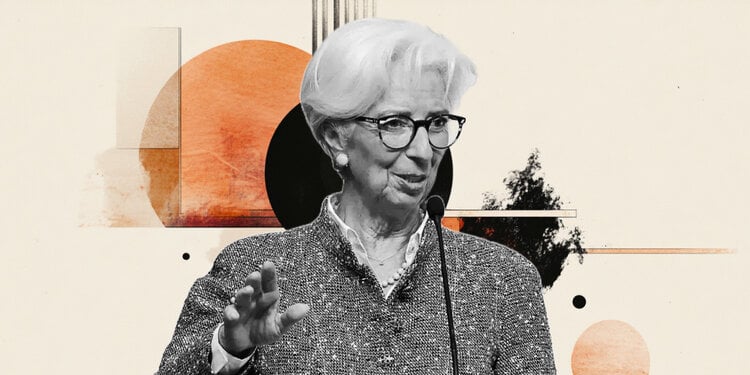On the morning of this Tuesday (1st), an accident at a work on the São Paulo subway caused a piece of Marginal Tietê, one of the main roads in the capital of São Paulo, to collapse, opening a crater. The Fire Department reported that there were no reports of casualties.
The Acciona concessionaire, which builds the subway’s line 6-Orange, said the accident occurred due to a “breakage of a sewage collector”. The collapse has been analyzed by experts who, in an interview with CNN on Monday, they pointed out the main engineering flaws that caused the crater.
According to engineer Vinicius Marchese, president of the Regional Council of Engineering and Agronomy of São Paulo (Crea-SP), the collapse “was probably driven by the accumulation of rain in recent days”. The engineer assessed that the collapse occurred due to the rupture of a sewage pipeline.
“It takes expertise to assess the soil and whether any structure has been damaged and based on that expertise, plan and recover the area,” Marcehse said.
Risk management specialist Gerardo Portela also reinforced the importance of a technical analysis at the accident site to discover the exact causes of the accident and identify those responsible for the collapse. “What should be done now is to find out what mistakes happened, how they happened and who should have supervised but didn’t”, he said.
In Portela’s opinion, the collapse is the result of an execution and engineering error. The expert considered that “there was a failure from the design, planning, execution and day-to-day conference to get to this point”.
Deadline for repair
Marchese, on the other hand, believes that the rupture of the sewer pipeline caused erosion that “brought down all this asphalt structure that was around the work”. The president of Crea considered it essential to carry out a technical analysis of the soil report to assess the impact on the structures in order to have an idea of the time that will be needed for the reconstruction.
Meanwhile, Portela calculates that the delay will be months, as the damage “was very severe”. According to the risk management specialist, a complete review of the project and the completion of complementary works may become necessary. “All of this goes to the account of the population that pays taxes,” he said.
Recovery works for the stretch that collapsed could take up to three months
According to Rafael Castelo, civil engineer and professor at PUC-SP, it can take up to three months from the beginning of the works to the stabilization of the site.
Also in an interview with CNNhe explained that studies still need to be done, because an accident like this happens due to a sum of factors, and that the work will be complex, starting with the restoration of the water main until the stabilization of the soil and reconstruction of the pavement.
“Some stretches should be stopped because of investigations. It is possible that the work will take a little longer”, he added.
Castelo said the employees took “a very big risk” with the situation, but that they were probably well trained in work safety issues, leaving on time.
Even so, he pointed out that the technology used in the works is safe, adopted in other countries as well.
For repair, it is necessary to divert sewage flow
According to Sergio Ejzenberg, a civil engineer and Master in transport at USP, he understands, on the other hand, that the repair work is large, but not complex, mainly because it did not reach the river bed.
As explained in an interview with CNNit is necessary to temporarily divert the sewage flow, redo the collector and trunk and backfill the hole.
“I work in stages, but working 24 hours a day, with staff and equipment, it can be done very quickly,” he said.
He explains that the water invasion probably happened due to the subway works, as they end up displacing earth, causing cracks in the sewage trunk. As it was an invasion of water by undermining, the flow was lower, giving workers a chance to leave the site.
Interdictions on the “main road artery” of the capital of São Paulo
Until 7 pm this Tuesday, the central and local lanes of Marginal Tietê on the stretch that collapsed were closed, generating intense traffic on the expressway, according to Hemilton Tsuneyoshi Inouye, director of operations at CET-SP.
As explained in an interview with CNNMarginal Tietê is the capital’s “main road artery”, connecting numerous highways.
“The volume of traffic in this direction from Marginal Tietê to the Ayrton Senna highway is 500 thousand vehicles per day”, he informed.
Inouye recommended that drivers use Marginal Pinheiros, Rodovia dos Bandeirantes and Tancredo Neves.
Repairing the damage as quickly as possible is the role of the government and the concessionaire
The director of Fundação Getúlio Vargas (FGV) Transportes, Marcus Quintella, declared, in an interview with CNNbe necessary for the public power and for the concessionaire to carry out the repairs as soon as possible.
Quintella cites both the data on the subway work and the structural data on Marginal Tietê, which impedes the flow of the road, delaying the movement of people and loads.
“Paying people’s bills is not very possible. But repairing these damages physically, as quickly as possible, is already the role of the government and the concessionaire itself, in case it is really guilty of the accident”, explains Quintella.
“Whoever it is, needs to act 24 hours a day because every minute, every hour delay of this recovery, it is affecting someone, it is affecting a human life, a person who needs to move”, he adds.
Options to avoid traffic
The specialist in Transport Engineering, Horácio Figueira, said in an interview with CNN that if people insist on using individual transport, “the congestion that we are seeing today will probably increase tomorrow and in the next few days”.
Figueira defended the use of public transport at this time, and cited the CPTM red line and the bus lane on Avenida Marquês de São Vicente as options for travel. In addition, the specialist defended that the flow on the Marginal Tietê expressway — which is free — be reserved for buses and trucks.
As “escape routes” for drivers, Figueira defended paths inside the city’s neighborhoods, such as Marquês de São Vicente, Rua Clélia, in Lapa, or crossing Ponte do Piqueri to escape the interdicted stretch. According to the expert, the detour within the city should be done only by cars, and that heavy vehicles have priority on the expressway because “without cargo vehicles, the city stops”.
“If we have a total ban on Marginal Tietê, then it will be chaos”, he concluded.
“Infrastructure problem is widespread in Brazil”
For economist and professor at Insper Paulo Furquim, the problem of infrastructure is recurrent in Brazil, and the accident at the subway project in São Paulo, this Tuesday (1st), only highlights an area of the country that needs reformulation.
“What we saw today is an accident, but what is most striking is the recurrence. Our infrastructure problem is widespread in Brazil, many times our problem is not even the accident in a work, it is the absence of the work, this is a urgent Brazilian agenda”, stated Paulo Furquim.
*with production by Giulia Alecrim, from CNN
Source: CNN Brasil







